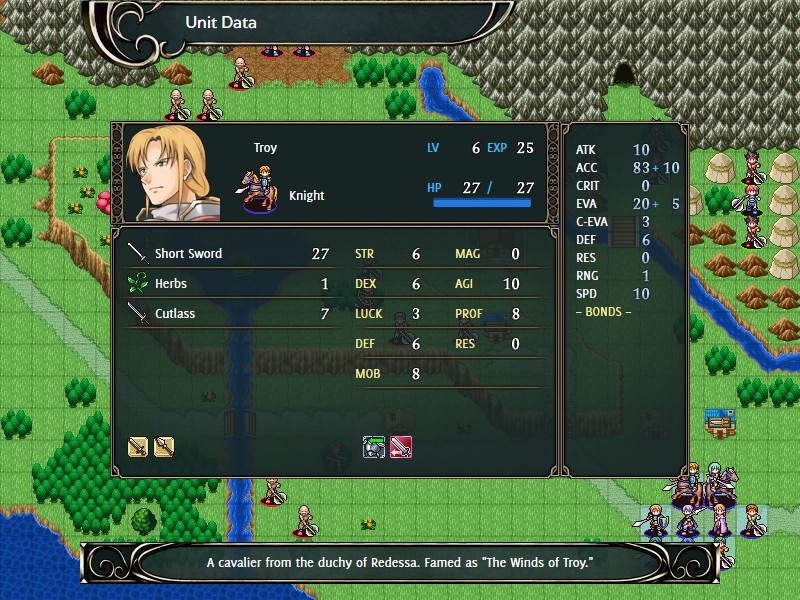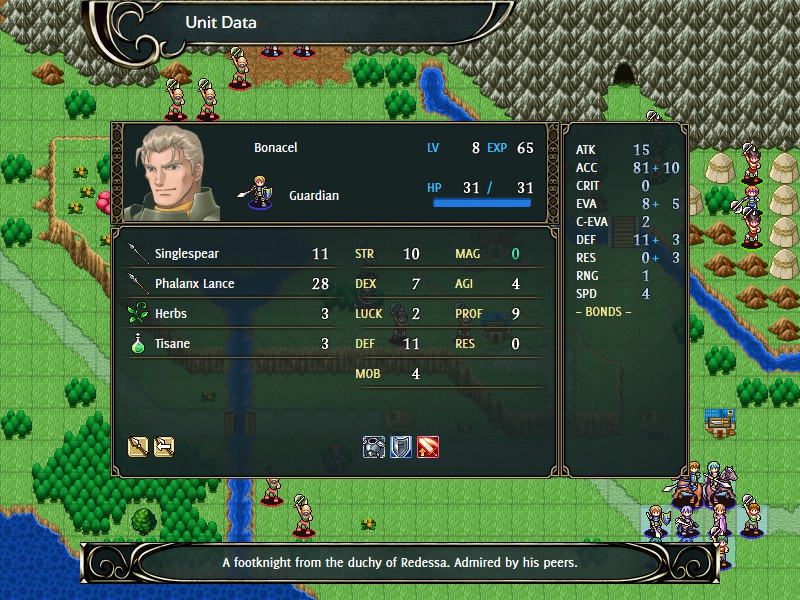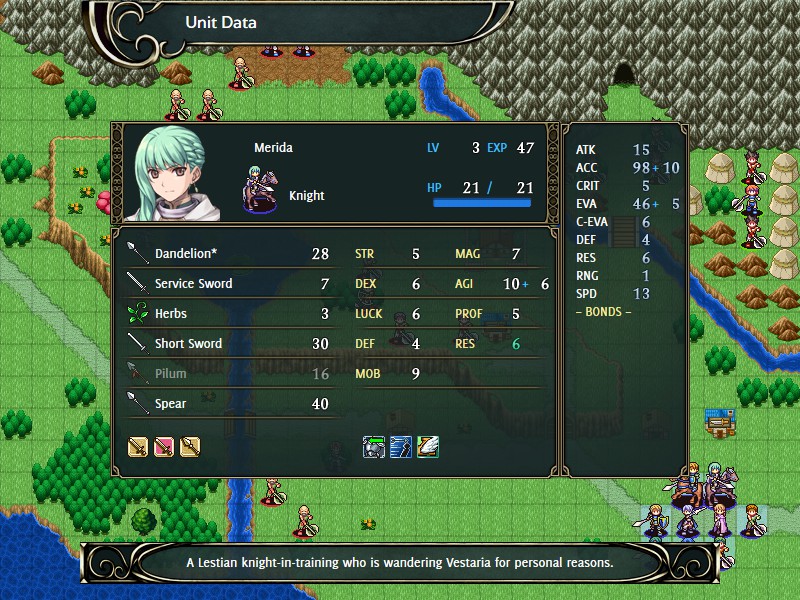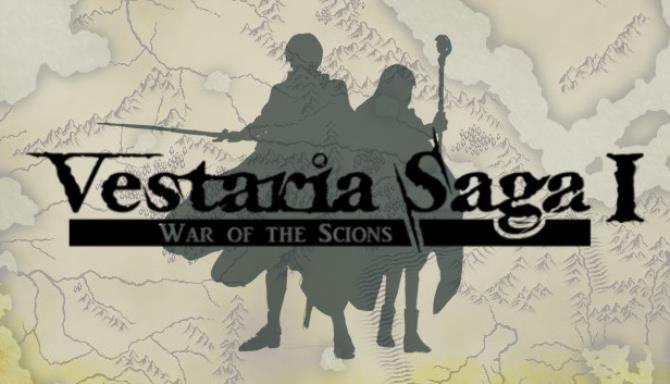The Vestaria Saga has a number of similarities to Kaga’s previous series “Fire Emblem.” In particular interest, the varied mobility of your troops. There is little I want to touch on that is specific to Vestaria Saga or that serves as a walkthrough for it. This is a blind reaction to the game’s mechanics from the first three chapters of the game and its similarities to past creations. If you have played not played Fire Emblem or similar series, this is for you.
Unit Movement
However, not all of your movements can move as quickly as others. If you examine your units stats, you will be able to find a measurement of the character’s mobility.
A Knight like Troy is mounted on a horse and can move up to 8 spaces.

An Armored Unit like Prody or Bonacel is more limited with only 4 spaces.

On top of this, some units have a skill that increases their movement. While this is not an attribute unique to our lady friend here, she is the earliest individual with it.

A character’s mobility is both their most basic and most important statistic. Units with wider movement can cover more ground and “do twice as many things” if played properly. They can hit enemy units sooner, soften them up, and then pull back.
Kiting
You may notice when commanding Troy that after attacking an enemy, he can move again if he still has movement. Or that he can move somewhere, accomplish a minor task like trade items or use an Herb, and then still finish moving. in Vestaria Saga, this is a special trait for mounted units. Hit and Run is the name of the game.
There are two ways to those make use of the Cavalry:
- Hit and Run frontliners. Put them behind more defensive units, have them pop out, hit something, then run back into their starting position. The enemy is now softened up for a killing blow while still being exposed to future attacks, and allowing other units to position themselves without having an ally clogging up a space to attack from.
- B-Team. Place the High Mobility characters together in a group and have them flank or go off and accomplish a different objective. The main force, full of slower units like your archers, healers, and infantry, progresses along towards the bulk of the enemy’s forces together. A number of chapter objectives revolve around Zade being somewhere and seizing something important and the game’s sprawling maps make it impractical for him to be everywhere at once.
Minding the Leash
This can be mitigated in a couple of ways.
- Making good use of defensive terrain can improve your units’ evasion, making them harder to kill.
- Alysia’s Personal Staff allows you to give a unit the Regenisis skill for 5 turns. This will restore an amount of HP at the beginning of each turn. Be mindful that the number of times you can do this is limited, and then Alysia cannot be deployed every chapter ( she must be recruited first in Chapter 1, and cannot be deployed in Chapter 3 for story reasons. I am unaware of any other instances at the time of writing, but it could happen.)
- The use of Herbs and other healing items can help sustain them throughout a map. I prefer to keep at least one healing item on every unit I am using just so that the option exists in the event of an unforeseen emergency.
- Retreating. Discretion is the better part of valor, and half of the strategy behind that Kiting concept I just touched on. Your cavalry are not bulky enough that they can just take on the entire enemy force themselves, and if they are not going to break through without dying, you can pull them back and regroup. Maybe rush one to your healer(s) and send them back on their way. Do not be Leeroy Jenkins.
Fliers and Archers
Fliers (at the time of writing I have not actually recruited any) are even better suited to solo missions because unlike traditional cavalry, they are completely unhindered by most terrain. This mobility does come with a tactical concern: Bows. Bows do additional damage to Fliers meaning they need to be more concerned with where they are positioned during the enemy phase in their presence. This can be somewhat dealt with by approaching outside their range and targeting them first, but this will not always be an option. Archers in some games have more varied talents and their variability makes it difficult to predict how good they will be.
Fire Emblem: Three Houses gave Archers a reliable way to counterattack at melee range at the expense of a skill slot. In Fire Emblem: Shadows of Valentia, Archers could improve their Range by improving weapons at a forge. Multiple games had Longbows that gave increased range. There is also the existence of siege weapons like Arbalests and Ballistae that have much larger attack ranges and can hit enemies from the other side of a small country.
All of this isn’t to say that you can’t or shouldn’t send a flier into an archer’s range. You might have to. But be wary and mindful of the risks before you commit.
Conclusion
Get Kills, Don’t Die.
Related Posts:
- Vestaria Saga I: War of the Scions Walkthrough
- Vestaria Saga I: War of the Scions – How to Recruit Amundsen
